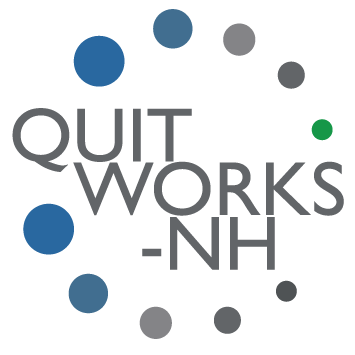Tobacco Use Treatment for Patients Who Are Pregnant or Postpartum
There is no safe level of nicotine for a developing fetus.
Nicotine crosses the placenta and intake in any form has considerable health risks with known adverse effects on fetal brain and lung tissue. Tobacco treatment at any point in pregnancy benefits the pregnant person and their fetus, with the greatest benefit before 15 weeks of gestation. While pregnancy alone influences many people to quit using tobacco products or e-cigarettes, with approximately 54% of people quitting directly before or during pregnancy, it is critical for healthcare providers to ask all of their pregnant patients about their tobacco use.
Clinicians should be aware that patients may not intuitively equate alternative forms of nicotine use (ie, e-cigarettes and vaping products) with tobacco use. In New Hampshire, vaping has increased the number of persons giving birth who are exposed to nicotine before pregnancy and during pregnancy.

Effects of Tobacco Use on People Who Are Pregnant and Their Infants
Tobacco use during pregnancy…
- Slows fetal growth before birth. People who smoke during pregnancy may birth a small infant, even after a full-term pregnancy.
- Raises a infant’s risk for birth defects, including cleft lip and cleft palate.
- Damages an infant’s developing lungs and brain. The damage can last through childhood and into the teen years.
- Doubles a person’s risk of bleeding too much during pregnancy and delivery.
- Increases the infant’s risk of Sudden Infant Death Syndrome (SIDS).
Infants can be exposed to smoke through nursing or inhaling second hand exposure. Tobacco use during the postpartum period…
- Passes harmful chemicals to the infant.
- Increases an infant’s risk for SIDS, lower respiratory illnesses, ear infections, and impaired lung function.
- Lowers serum prolactin levels (likely through the effect of nicotine) which decreases milk supply.
Rates of Tobacco Use for People Who are Pregnant in New Hampshire
- Rates of any tobacco use during pregnancy have steadily decreased from 23.3% in 2016 to 15.3% in 2020.
- Pregnant women who quit smoking by their first prenatal visit increased from 28.4% in 2019 to 37% in 2020, with 35.3% of those women staying off cigarettes in 2020, jumping from 20.8% in 2019.
E-cigarettes are NOT a Safe Alternative
Although cigarettes are the most commonly used tobacco product during pregnancy, alternative forms of tobacco and nicotine—such as e-cigarettes or vaping products, hookahs, and cigars—are increasingly common. E-cigarettes are not safe for people who are pregnant or producing milk. While little is known about the effects of e-cigarette use on the infant’s health through nursing or second hand exposure, we know that e-cigarette aerosol contains harmful chemicals like nicotine, heavy metals, flavorings, solvents, and other toxicants.
Strategies for Healthcare Professionals
Healthcare professionals play an important role in educating their pregnant and postpartum patients about the significant perinatal risks associated with tobacco and e-cigarette use. During pregnancy, many patients have more frequent contact with healthcare professionals than they may otherwise. Healthcare professionals should maximize these visits and interactions, and keep the discussion of quitting at the forefront of prenatal care.
Using guidance from the American College of Obstetricians and Gynecologists (ACOG) clinical recommendations for tobacco and nicotine cessation during pregnancy, QuitWorks-NH recommends the following:
- Inquire about all types of tobacco or nicotine use during the pre-pregnancy, pregnancy, and postpartum periods.
- Encourage patients who use tobacco or e-cigarettes to quit, regardless of the infant’s feeding method (breastmilk or formula). Advise treatment of tobacco products used in any form and provide motivational feedback.
- Refer patients to services such as referrals to resources such as QuitNow-NH (1-800-QUIT-NOW), NH Home Visiting Program services, and NH Lactation Program services.
- Advise patients who are pregnant of the significant perinatal risks associated with tobacco and e-cigarette use.
- Individualize care by offering psychosocial, behavioral, and pharmacotherapy interventions.
- Provide continual support and address stressors in the postpartum period to ensure continued tobacco use treatment success.
eLearning Module: Supporting People Who are Pregnant and Postpartum to Quit Tobacco
QuitWorks-NH has developed a free, on-demand eLearning module to understand the unique issues related to supporting people who are pregnant and postpartum to quit tobacco and make appropriate referrals.
Important note: QuitWorks-NH uses the terms ‘producing milk’ and “lactating” to refer to all types of human milk feeding, including breastfeeding, chestfeeding, pumping, and hand expressing human milk. QuitWorks-NH also uses the term ‘nursing’ to describe the act of feeding an infant or young child breast milk, as defined by the Centers for Disease Control and Prevention (CDC).
